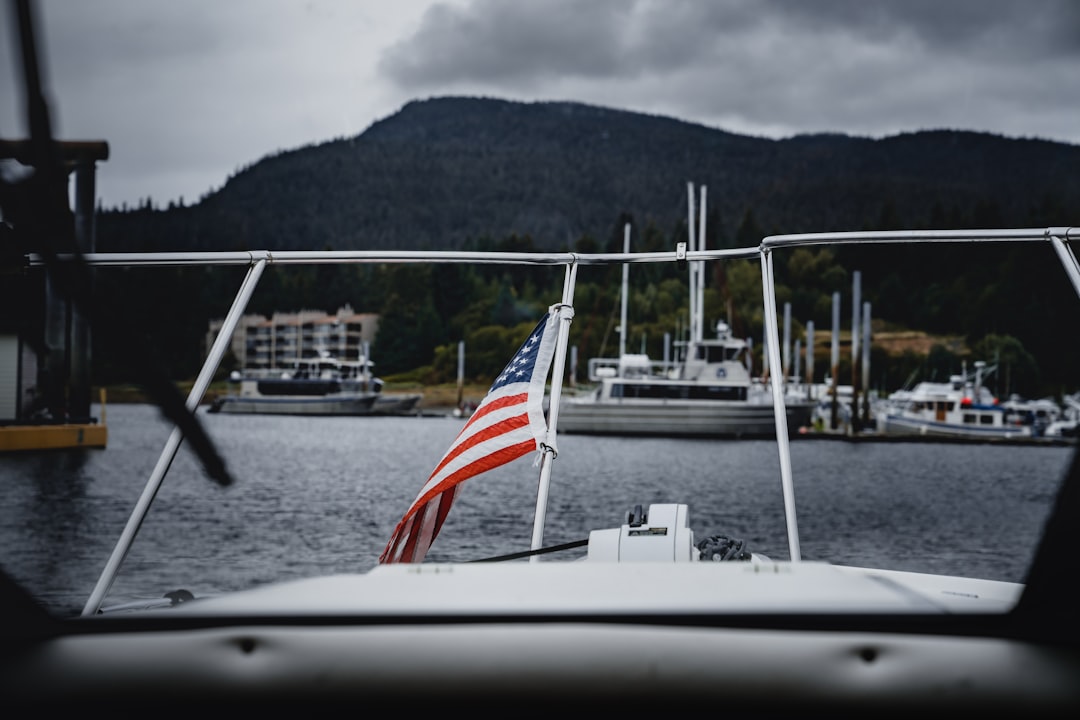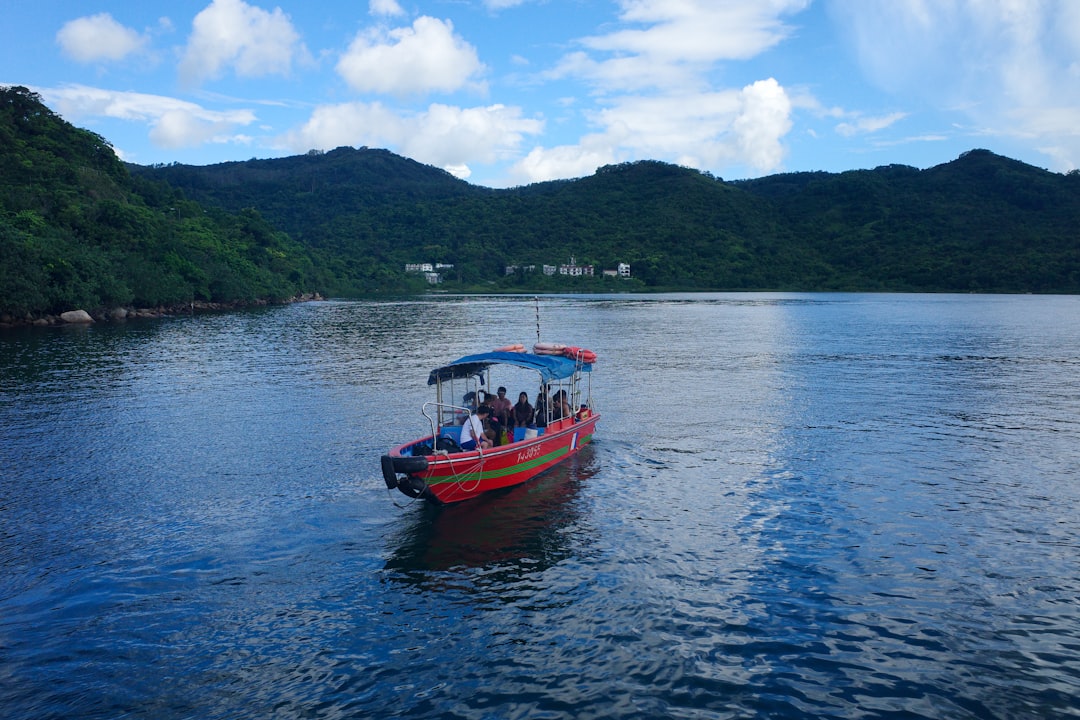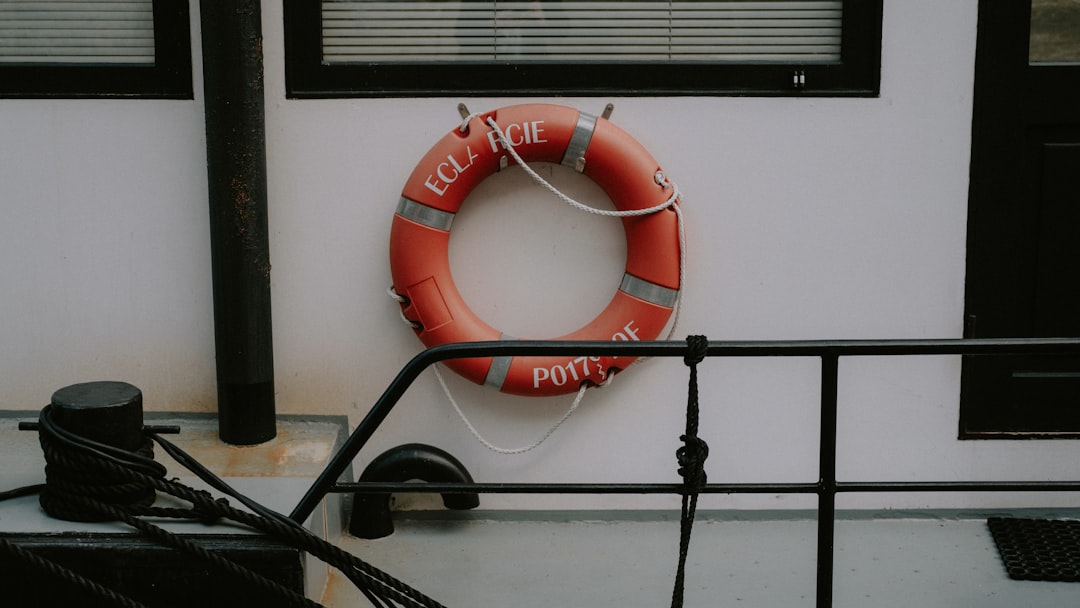

Engage prospects with a scan and streamline customer engagement with FREE QR code marketing tools by Sona – no strings attached!
Create a Free QR CodeFree consultation

No commitment

Engage prospects with a scan and streamline customer engagement with FREE QR code marketing tools by Sona – no strings attached!
Create a Free QR CodeFree consultation

No commitment
Boating schools are essential for individuals seeking comprehensive maritime education, whether the goal is to ensure boating safety, earn certification, or advance toward a maritime career. As demand for high-quality boating courses and sailing lessons grows, instructors and administrators face mounting challenges: missing key student feedback due to traditional, slow review methods; incomplete understanding of student success and program impact because of fragmented or delayed data; and the ongoing difficulty of adapting quickly to evolving expectations in a customer-centric environment. These issues are especially pressing as high-value prospects and critical feedback can remain untracked, leading to lost opportunities for course improvement and enrollment growth.
Incorporating QR codes into the boating school experience addresses these longstanding obstacles. With a simple scan, students who might otherwise leave their feedback unspoken or untracked can instantly submit course evaluations, access resources, or request more information. This enables instructors to act on timely, actionable insights. The seamless digital connection bridges offline and online worlds, helping schools capture more comprehensive feedback and reveal engagement signals previously lost in paper forms or unstructured emails.
Whether your goal is to boost response rates for course reviews, fine-tune lessons based on live input, or validate program value for prospective enrollees, QR-captured feedback ensures every interaction becomes a touchpoint for continuous improvement. By making it easy for students to engage at every step, boating schools position themselves as adaptive, student-centered, and equipped for the demands of the evolving maritime education space.

Boating schools have long relied on paper surveys or follow-up emails to capture student feedback, yet these outdated processes often result in poor response rates, incomplete data, and slow course adjustments. Many high-value student insights are missed simply because there is no quick or private way for individuals to share their experiences the moment they finish a course. QR codes alleviate these issues by enabling instant, device-accessible feedback in real time. Every student gains a direct, frictionless pathway to be heard.
To maximize value, pair QR codes with a clear strategy that improves collection, analysis, and follow-up. Focus on intentional placement, transparent requests, and fast action on results. This combination turns scan data into visible improvements that students notice in future sessions and keeps the feedback loop vibrant and trustworthy.
By syncing QR feedback with your CRM using Sona’s HubSpot integration and learning management tools, boating schools can build a longitudinal view of each student’s journey. Scan data combined with course performance forms a strong foundation for data-driven curriculum improvements and more personalized learning experiences over time.

Boating schools operate across busy classrooms, docks, marinas, and open water. Changing weather, varied schedules, and a mix of hands-on and classroom instruction make consistent feedback capture challenging. Traditional practices like paper surveys or post-course emails often fail to identify who is truly engaged or considering additional programs. Anonymity is valuable for candid input, yet it also means niche insights are easily lost. QR codes streamline this complex environment by providing a simple and universally accessible bridge from physical moments to digital action.
The benefits extend beyond surveys. QR codes shorten the path from curiosity to communication, which ensures that interest signals do not disappear. Prospective enrollees can scan from a poster near the marina, an equipment checklist, or a certificate cover to submit questions or enroll in the next course. For the school, each scan creates measurable engagement data that can be routed to the right team member for timely follow-up, aligning with broader QR code marketing best practices.
For example, a QR code placed on a certificate sleeve or course completion badge encourages students to submit a quick review before leaving the premises. On the dock, a safety sign with a code can open a short incident or maintenance report, ensuring issues are logged immediately. Each scenario turns a fleeting moment into a documented data point that drives improvement.

Different QR code formats address specific needs across instruction, safety, and marketing. Selecting the right format for each touchpoint ensures your codes drive the intended action and produce usable data.
Dynamic QR codes are especially valuable in boating education because course details and schedules change frequently. They let you update destinations without reprinting maps, posters, or boat decals, which is cost effective and operationally efficient.
When possible, pair dynamic QR codes with custom, trackable URLs. This enables campaign-level reporting by course type, vessel, instructor, or location, which gives you the granularity to improve both operations and marketing.

High-value feedback and lead signals are often generated in fleeting moments: immediately after a lesson, during safety drills, or between dockside practice and classroom review. If there is no easy or discreet way to capture those signals, they are lost. QR codes on certificates, schedule printouts, training boats, and classroom doors convert these micro-moments into measurable outcomes—and even support adjacent experiences like boat rentals.
Think beyond the evaluation form. Codes can also unlock how-to videos, prepare students for advanced certifications, or connect alumni with referral programs. Every physical asset can pull double duty as a digital entry point and a growth engine, as demonstrated in this 900 signups case study.
Ultimately, growth comes from making it effortless to engage. When your environment is filled with clear calls to scan, students and prospects will tell you what they need, when they need it, and how they prefer to learn.
Mapping QR codes to core workflows ensures that feedback and enrollment signals flow into one coherent system. Start with the highest-impact use cases, then expand as teams and students become comfortable with scanning.
Prioritize the use cases that align with your near-term goals. If the aim is data-driven course refinement, start with evaluations and safety inputs. If enrollment growth is the top priority, focus on inquiry codes, event capture, and retargeting.
Not every valuable interaction results in a form submission or enrollment. Prospective students may scan a curriculum overview at the marina, alumni may scan a schedule but abandon sign-up, or parents may scan a safety flyer and stop there. These moments still signal intent. By assigning unique QR codes to each course, flyer, vessel, and event, you can tag these behaviors and build segmented audiences for targeted follow-up.
Segmentation should reflect the lifecycle of a boating learner. QR scans can differentiate between prospects, active students, and alumni, as well as interests such as sailing versus powerboating or basic versus advanced certification. Granular tagging transforms anonymous foot traffic into actionable cohorts.
This audience-centric approach reduces missed opportunities. Instead of guessing who is ready for what, your team can align offers and support with demonstrated interests, which leads to higher enrollment rates and stronger student satisfaction.
Boating schools must unify print, digital, and event marketing into a coherent enrollment journey. Valuable leads generated at boat shows, yacht club events, or via classroom handouts can easily slip through the cracks without connected systems. QR codes act as the glue that ties physical materials to digital tracking and follow-up.
When each code is linked to a distinct campaign or placement, you can measure the impact of brochures, posters, and event signage without manual data entry. Your staff can see in real time which assets are driving scans, which messages resonate, and which channels warrant more investment.
Modern QR platforms with CRM integrations centralize these cross-channel insights. Scan data automatically populates student records, triggers alerts, and powers retargeting, which reduces time to follow-up and improves the quality of support.
Clarify what you want to achieve and who the campaign is for. For example, you may want to collect post-certification feedback within 24 hours, reduce no-shows for practical sessions, or build segmented audiences for advanced sailing courses. A single QR code can link to a dynamic form that adjusts questions by course type or learner level.
Select static or dynamic codes based on longevity and tracking needs. Static codes suit one-off resources that rarely change, such as a safety PDF. Dynamic codes are best for feedback and enrollment because you can update destinations and collect analytics without reprinting.
Build codes and destinations that are easy to scan and complete. Visual trust cues and mobile-optimized forms make participation more likely. Strong calls to action reduce uncertainty, which leads to higher conversion.
Place codes where your audience naturally engages. Consider lighting, distance, and scanning ergonomics. High-visibility placements at key transition points increase participation and lower friction.
Analytics transform scans into insight. Monitor performance weekly, intervene when response rates dip, and celebrate what is working. Data-driven iteration ensures your QR program stays effective as seasons and student profiles shift.
A robust platform like Sona QR can centralize code creation, edits, and analytics. Integrations with tools such as HubSpot and Salesforce enable automated follow-ups and revenue attribution, connecting your QR efforts to tangible outcomes.
Counting QR scans is a start, but the real value comes from connecting those scans to learning outcomes, pipeline metrics, and long-term relationships. Without this link, teams miss opportunities for retention, upsell, and smarter curriculum choices. Modern analytics close the loop between student intent and institutional results.
At a minimum, schools should capture scan time, location, device type, and destination performance. The next level ties scans to student records, course completions, sentiment scores, and alumni engagement. When you can see which touchpoints lead to enrollments, referral growth, or positive reviews, it becomes clear where to invest.
Platforms like Sona QR and Sona.com extend beyond scan counts. They help teams unify offline QR activity with website visits, ad engagement, and CRM data. Identity resolution and multi-touch attribution connect anonymous scans to known contacts over time. The result is a clear picture of how QR engagement contributes to pipeline, revenue, and better learning outcomes.
Scaling QR across courses, locations, and seasons requires consistent processes and thoughtful design. A few best practices go a long way in ensuring reliable data, high scan rates, and easier decision-making.
Start by mapping every major interaction a student has with your school, from discovery to alumni engagement. Then assign unique, trackable QR codes to each step. Over time, you will build a rich dataset that reveals where learners get excited, confused, or stuck, empowering smarter improvements.
A centralized QR and data management system helps these practices scale. With edit-once, update-everywhere capabilities and live analytics, your team can keep codes current across changing course schedules and seasonal events.

Schools that replace legacy review channels with QR-enabled feedback consistently report better participation and more useful data. The real advantage appears when they close the loop quickly, show students what changed, and keep refining their approach.
Consider a maritime academy that attached QR codes to course completion certificates. Response rates jumped from 30 percent to over 75 percent. Comments highlighted where students struggled with chart plotting in rough conditions, prompting the school to add a short practice module. Subsequent cohorts rated confidence higher and needed fewer instructor interventions.
Instructors and administrators frequently note that QR workflows change the culture. Students feel heard, participation feels easy, and staff gain actionable insights that inform teaching and operations without adding paperwork.
Implementing QR codes is straightforward, yet excellence requires attention to the details that influence participation and data quality. The following tips and cautions come from schools that have scaled QR successfully across vessels, classrooms, and events.
Be transparent about how feedback will be used. Students are more willing to scan when they believe their voice matters. Follow up with a short summary of changes made and a thank-you message, which reinforces participation.
Common pitfalls include burying QR codes in cluttered designs, sending scanners to desktop-heavy pages, or using tiny codes that fail in the field. Avoid these missteps by prioritizing clarity, mobile optimization, and field testing before large print runs.
For boating schools committed to modernizing their approach to feedback, engagement, and operational insight, QR codes present a practical bridge between traditional instruction and a data-driven future. Every certificate, sign, and training vessel can become a portal to real-time student feedback, nuanced understanding of engagement patterns, and an energized, participatory learning community.
When seamlessly integrated across marketing, instructional, and operational workflows, QR-driven strategies support immediate student engagement while also providing the granular data needed to optimize course quality, personalize learning, and drive referral growth. With the right platform and disciplines in place, boating schools can unify their offline environments with digital intelligence, convert more interest into enrollment, and elevate the standard of maritime education. Tools like Sona QR help teams generate and manage dynamic codes, track performance, and connect scan activity to CRM and revenue outcomes, turning every scan into a signal for continuous improvement. Start creating QR codes for free.
QR codes have transformed boating schools from traditional feedback methods into dynamic, real-time engagement tools. Whether it’s streamlining student feedback, enhancing instructor-student communication, or capturing actionable insights, QR codes replace cumbersome surveys with instant, mobile-friendly interactions that drive continuous improvement and elevate training quality. Imagine knowing exactly which lessons resonate most and being able to respond immediately to student needs.
With Sona QR, you can create dynamic, trackable QR codes in seconds, update feedback campaigns instantly without reprinting, and link every scan directly to meaningful outcomes like course enhancements and student satisfaction. No missed feedback, no guesswork—just smarter, more responsive boating education.
Start for free with Sona QR today and turn every scan into valuable insights that propel your boating school forward.
QR codes enable instant, device-accessible feedback, streamline communication, improve response rates, and help boating schools capture comprehensive student insights for continuous improvement.
By placing QR codes at high-impact touchpoints like classrooms, docks, and certificates, boating schools allow students to submit quick reviews and feedback in real time, improving participation and data quality.
Boating schools use dynamic web link codes for surveys, vCards for contact sharing, SMS or email codes for quick communication, app download codes, and Wi-Fi access codes to meet various instructional and operational needs.
QR codes on brochures, posters, and equipment capture inquiries and requests for information, enabling seamless follow-up and reducing lost high-intent leads.
Best practices include assigning unique QR codes per interaction, embedding tracking parameters, automating follow-ups, training staff, and using durable materials placed in visible, scannable locations.
They monitor scan and completion rates by course, instructor, and location, connect scans to student records and outcomes, and use CRM integrations to trigger personalized outreach and improve course offerings.
Traditional methods like paper surveys and emails often result in low response rates, incomplete data, slow course adjustments, and missed high-value student insights.
While the article does not specify locations, it suggests using targeted inquiries through QR codes on brochures or posters to request course information, which can help identify accredited schools.
The article does not detail specific qualifications but implies that boating schools offer various courses for different skill levels, and prospective students can use QR codes to inquire about prerequisites.
Boating schools provide a range of courses including safety certification, sailing lessons, advanced modules, and maritime career training, with options tailored to learner levels and interests.
The article does not provide specific cost information for boating school attendance.
QR codes enable quick reporting of maintenance issues, safety incidents, and equipment checks directly from boats and docks, improving response times and operational efficiency.
Boating schools use QR codes on alumni newsletters and event materials to gather testimonials, track referrals, and provide continuous engagement opportunities.
Use Sona QR's trackable codes to improve customer acquisition and engagement today.
Create Your FREE Trackable QR Code in SecondsJoin results-focused teams combining Sona Platform automation with advanced Google Ads strategies to scale lead generation

Connect your existing CRM

Free Account Enrichment

No setup fees
No commitment required

Free consultation

Get a custom Google Ads roadmap for your business






Launch campaigns that generate qualified leads in 30 days or less.
